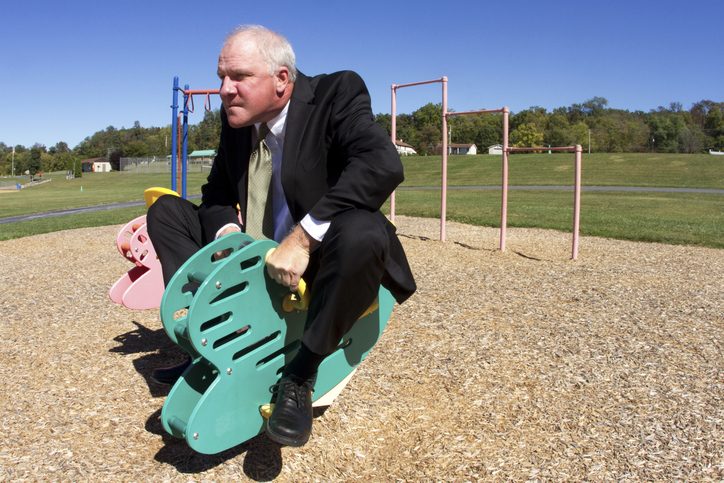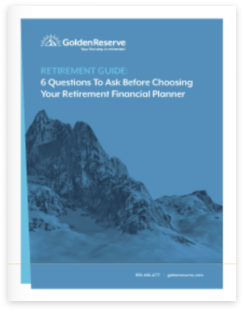Debunking the Retirement Myth: You Don’t Need 2 Million Dollars
Feeling that nagging doubt about your retirement savings? You’re not alone. A recent study found just 49%…
Golden Reserve

In this adaptation from Golden Reserve Founder Greg Aler’s new book, Fire Your Financial Advisor, we take a closer look at how the retail financial advisor became engrained in the fabric of retirement planning.
Do you have any regrets from your younger years? Ted Benna, “the father of the 401(k),” has one.
“I helped open the door for Wall Street to make even more money than they were already making,” Benna said about the creation of the 401(k) in a 2017 Wall Street Journal interview. “That is one thing I do regret.”
Technically, the Revenue Act of 1978 was the catalyst for the first 401(k) plans. The change in tax code was meant to provide executives a way to defer compensation from bonuses or stock options. It didn’t gain mainstream attention until the fall of 1980 when Benna, who worked for a benefits consulting firm, pitched the idea of a 401(k) as we know it today to a bank client as a potential solution for the redesign of their retirement program. What was then considered a creative (and to some controversial) way to utilize the change in tax code began to gain traction in the media, and eventually in more HR departments across the country.
As pensions disappeared, people needed somewhere to put their retirement money. The financial services industry saw dollar signs. But before they could capitalize on the opportunity, they’d need to come up with some creative solutions of their own. What Wall Street did next is the source of Benna’s regret.
Wall Street was dominated by the Smith Barneys and Goldman Sachs of the world. These firms certainly weren’t close to the average soon-to-be-retiree in middle America, and they definitely didn’t have the distributed workforce to serve them. This is how the concept of a retail financial advisor was born; someone local to the community, convenient to visit and trusted for their advice. But first, they had to find them.
The industry recruited salespeople from across the country. You didn’t have to know financial services. You just had to know how to sell. That left one problem: selling investments requires licensure. Retail financial advisors would be selling both insurance and securities. The licensing requirements vary by state, but most simply require you to be an adult, not a felon, complete a self-study course, and pass an exam. Obtaining a Series 65 license from the Financial Industry Regulatory Authority (FINRA) is similar.
The bar for entry to handle someone’s life savings is lower than that of an accountant, attorney, or even a plumber. In Ohio, you must have at least 5 years’ experience and carry liability insurance, in addition to passing an exam and not being a felon. Suffice it to say, becoming a retail financial advisor is a much easier and quicker endeavor. Wall Street was able to legitimize their new-fangled workforce quickly.
But that didn’t solve another problem: how to quickly train a new retail financial advisors on the nuances of the stock market. The answer? You don’t. You give them something easy to sell. That something was the mutual fund. Since mutual funds contain a number of securities, you didn’t have to sell someone on an individual investment. All the stock picking was handled by a mutual fund manager on Wall Street anyway. Retail financial advisors were given an oversimplified list of mutual funds organized by risk profile: high, medium, and low. Unlike today, these mutual funds didn’t have much of a performance track record the investor could check. And besides, this was the 1980s; you couldn’t just “Google it.” Wall Street had retirees hook, line and sinker.
Pricing was designed with the same lack of transparency in mind. The retail financial advisor who sold you the mutual fund would receive a fee, not–so–obviously labeled a “load fee”. This could be (and for many mutual funds still is) around 5% or more of what you invest. After that, retail financial advisors would receive a recurring fee capped at 1% every year, netted off your mutual funds’ gains or added to its losses. And let’s not forget, the mutual fund manager who would actually be doing the investment picking for the fund would get a fee, too.
Meanwhile, statements only showed mutual fund values, not a line-item accounting of these fees. It was clear as mud for investors, but not for the financial services industry who invented this system. They– and their army of retail financial advisors– were riding high.
Buoyed by an exceptional bull market, mutual funds succeeded and became the de facto king of retirement planning. With things going well, the financial services industry had no incentive to change. So, they didn’t.
Retail financial advisors continue to convince retirees that mutual funds are their only option. And they continue to collect the hefty fees stuffed into every nook and cranny of the investments they sell. This is retirement planning in America. And it’s time for a change.
———————
Fire Your Financial Advisor is available now on Amazon.com and on our website. To get your copy, or download a free chapter, click here.

Share this article
Feeling that nagging doubt about your retirement savings? You’re not alone. A recent study found just 49%…
“When should you start taking Social Security?” ranks among the top questions researched by retirees. Social Security…
Retirement is a time to relax and enjoy the fruits of your labor. But how do you…
Ever wondered how much your financial advisor is really pocketing from your retirement nest egg? Are you…